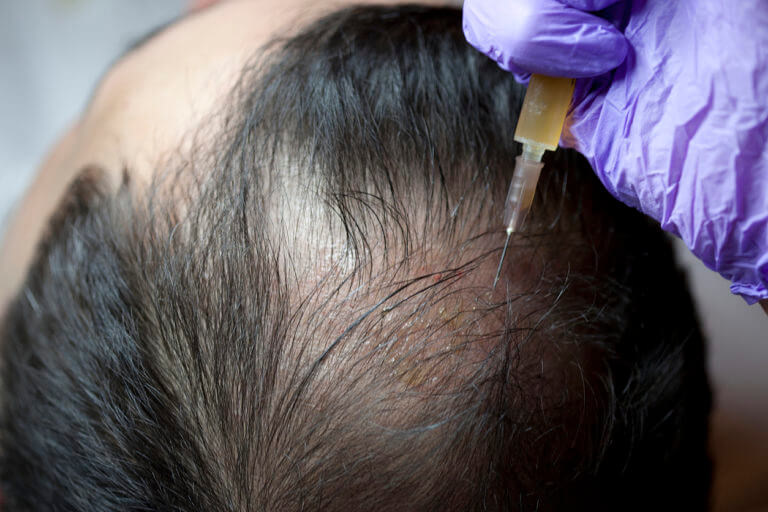Hair loss can be a stressful experience for both men and women. Whether due to genetics, aging, or other factors, losing hair affects confidence and self-esteem. Thankfully, modern treatments like PRP (Platelet-Rich Plasma) therapy offer a promising solution.
In this guide, we will explore:
- What PRP for hair loss is
- How it works
- Who can benefit from it
- What results to expect
- Side effects and safety
If you’re looking for a natural hair loss treatment, this guide will help you understand why PRP for hair loss is gaining popularity.
What is PRP for Hair Loss?
PRP (Platelet-Rich Plasma) therapy is a non-surgical treatment used to stimulate hair growth. It involves using the patient’s own blood plasma, which is rich in growth factors. These growth factors help revitalize hair follicles, encouraging them to produce thicker and healthier hair.
Why is PRP Used for Hair Growth?
PRP is effective because it contains natural proteins that help:
✔️ Repair damaged hair follicles
✔️ Increase blood circulation to the scalp
✔️ Promote new hair growth
PRP therapy is often used alongside other hair treatments like minoxidil or hair transplants for better results.
How Does PRP Work for Hair Loss?
The PRP treatment process involves three simple steps:
1. Blood Collection
A small amount of blood (about 10-20ml) is drawn from the patient’s arm.
2. Plasma Separation
The blood is placed in a centrifuge machine, which spins rapidly to separate platelet-rich plasma from other components.
3. Scalp Injection
The concentrated PRP solution is injected directly into areas of the scalp where hair loss is noticeable.
This process stimulates the hair follicles, making them stronger and encouraging hair regrowth.
Who Can Benefit from PRP Hair Treatment?
PRP therapy is ideal for people experiencing:
✔️ Early-stage hair loss (mild to moderate thinning)
✔️ Male and female pattern baldness
✔️ Hair thinning due to stress or medical conditions
✔️ Post-hair transplant healing
However, PRP may not work for:
❌ People with complete baldness
❌ Individuals with severe scalp conditions
❌ Those with blood disorders
A doctor consultation is necessary to determine if PRP is the right choice.
Benefits of PRP for Hair Growth
1. Natural and Safe Treatment
Since PRP is derived from your own blood, there is no risk of allergic reactions.
2. Non-Surgical Procedure
Unlike hair transplants, PRP is a minimally invasive treatment with no downtime.
3. Improves Hair Thickness and Strength
PRP not only regrows hair but also strengthens weak hair follicles, leading to fuller, thicker hair.
4. Quick and Convenient
Each PRP session takes about 30–60 minutes and requires minimal recovery time.
What to Expect from PRP Hair Treatment?
How Many Sessions Are Needed?
Most patients need 3–4 sessions spaced 4–6 weeks apart. Maintenance sessions may be required every 6–12 months.
When Will I See Results?
Results are gradual and typically visible after 3–6 months. Full results may take up to one year.
PRP for Hair Loss: Side Effects and Risks
PRP is generally safe, but some mild side effects may occur, such as:
✔️ Scalp redness or swelling (temporary)
✔️ Mild discomfort at injection sites
✔️ Minor bruising
These side effects usually disappear within a few days.
Who Should Avoid PRP?
PRP may not be suitable for people with:
❌ Chronic skin diseases
❌ Blood clotting disorders
❌ Active infections
Always consult a certified dermatologist before starting PRP treatment.
Conclusion
PRP for hair loss is a safe, effective, and natural treatment for those experiencing hair thinning or early-stage baldness. With minimal risks and no surgery, PRP offers promising hair restoration results.
If you’re considering PRP therapy, consult a trusted dermatologist to see if it’s the right fit for your hair regrowth journey.
Would you like to learn more about hair loss solutions? Keep exploring our blog for the latest treatments and tips!

